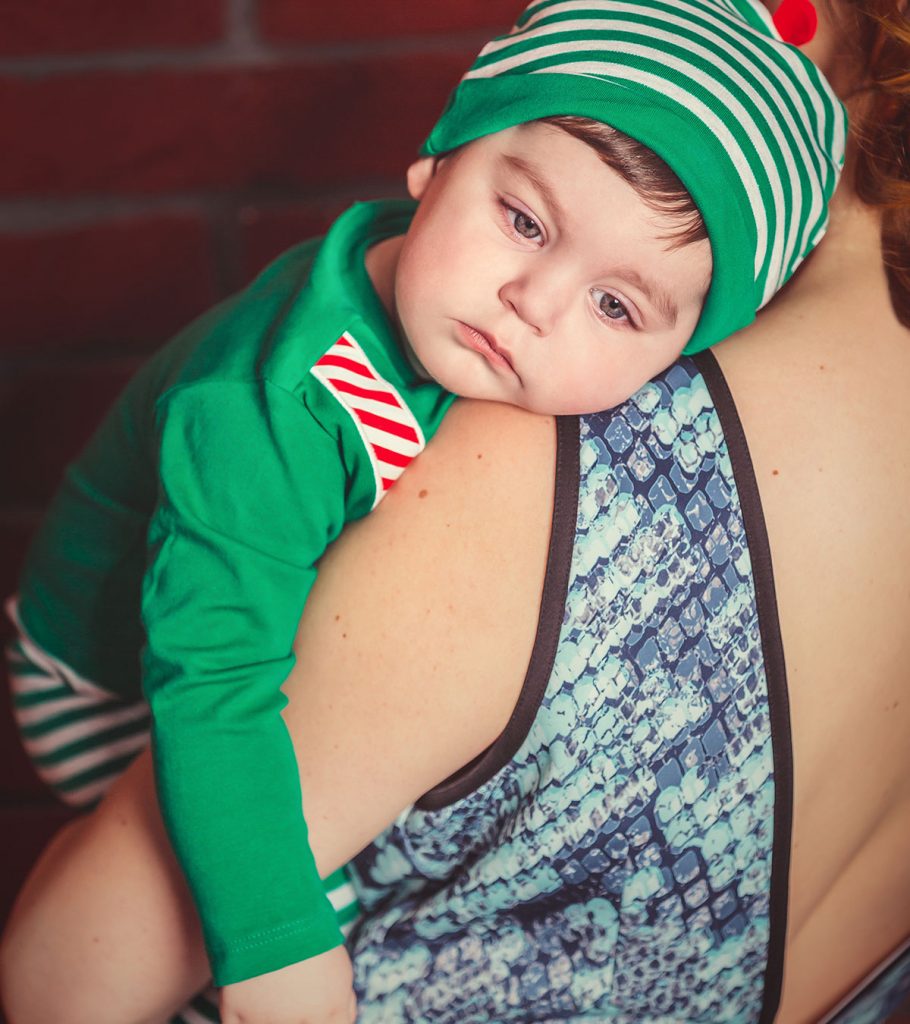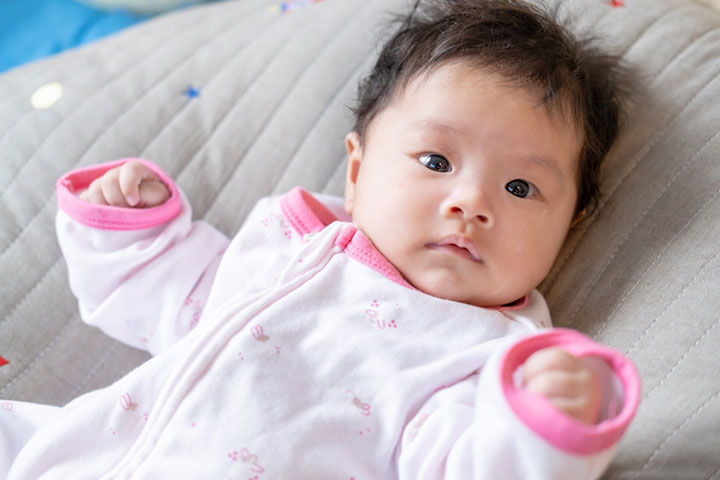Asperger’s syndrome in babies is a neurobiological disorder that may lead to difficulty communicating and adjusting to changes in routines. While it was identified as an individual developmental disorder initially, many psychiatric health bodies, including the American Psychiatric Association (APA), now consider Asperger’s syndrome as a part of the autism spectrum disorder (ASD) (1). Early diagnosis can help the psychiatrists establish a relevant treatment plan that can help improve the child’s academics and social skills training (2). In addition, the sooner the treatment begins, the better the outcomes and prognosis are. With persistent treatment, babies with Asperger’s can lead a near-normal life. Read this post to know more about the signs, causes, diagnosis, and management of Asperger’s syndrome in babies.
What Are The Signs Of Asperger’s Syndrome In Babies?
A child with Asperger’s syndrome is likely to display the following signs (3).
- No interaction with others
- No eye contact
- They might appear indifferent to others
- Prefer to be alone
- Dislike attention
- Extreme reactions to objects, activity, and events
- Repetitive behaviors such as rocking
- Fixating on objects with eyes
The symptoms of Asperger’s syndrome become more profound in the second year of life. Do note that not all babies who display these signs have Asperger’s syndrome. Also, at the same time, babies with Asperger’s syndrome may not display all of the above symptoms. Therefore, it is best to consult a doctor if you suspect your baby might have Asperger’s syndrome.
Becca, a mother to four children, one of whom has been officially diagnosed with Asperger’s syndrome, candidly discusses how her second son, Thomas, is also showing signs of Asperger’s. She shares, “There is a huge sensory issue. Thomas cannot handle extreme sounds like high-pitched noises, children screaming, and a lot of commotion in a room, and he has always held his ears in pain whenever I vacuum. As far as textures go, he freaks out by the feel of half of his clothes, always complaining that they are not soft enough or scratchy.
As far as social things go, I’ve never really noticed that Thomas has problems talking to other kids or if he misunderstands social cues … He has an extreme problem of not being able to look people in the eye … he seems to have this a little too long delay in his responses or you have to direct him to answer the teacher when she asks him a question (i)”
How Is Asperger’s Syndrome Different From Autism?
The main distinguishing feature is that the symptoms of Asperger’s syndrome are mild when compared to autism. A child with AS is also likely to have better language and cognitive skills unlike the cognitive rigidity and speech delay observed in autism.
The primary signs are similar but with less intensity among those with AS. The possible areas of development commonly affected by Asperger’s syndrome and autism are (3):
- Social skills
- The senses – hearing, taste, touch, sight, smell
- Play and imagination
- Behavior
Problems with the features mentioned above might indicate Asperger’s syndrome or other autism spectrum disorders depending on the consistency and pattern exhibited by the child.
What Causes Asperger’s Syndrome?
The exact cause of Asperger’s syndrome is unknown. The following factors increase the risk of developing the syndrome (4).
- Combination of faulty genes is often considered a primary reason. It indicates that Asperger’s syndrome can run in families.
- Abnormalities in chromosomes during the formation of the fetus.
- Usage of certain medicines by the mother during pregnancy can increase the risk of genetic anomalies in the fetus, which might lead to Asperger’s syndrome.
- Babies born to older parents might be at a higher risk.
Remember, AS does not result from poor parenting or bad upbringing of the baby. It is a disorder that occurs due to innate abnormalities in the baby’s brain.
How Common Is Asperger’s Syndrome In Babies?
The exact prevalence of AS is not known since the condition is counted under the common range of ASD (5). According to 2014 data from US Centers for Disease Control and Prevention, about one in 59 children in the US were diagnosed with autism spectrum disorders (6). The figure had increased since the year 2000 when one in 150 babies had ASD. These statistics include Asperger’s syndrome as part of ASD.
At What Age Is Asperger’s Syndrome Diagnosed?
The doctors can diagnose Asperger’s syndrome in babies as young as 18 months (4). Since AS is on the milder end of ASD, an affirmative diagnosis might be made around the age of seven years (7).
Diagnosis Of Asperger’s Syndrome
The primary diagnosis of Asperger’s syndrome is based on the behavioral peculiarities of the child. The pediatrician will assess the child, and if necessary, the he or she might be referred to a developmental pediatrician or a psychologist. Since AS is considered under ASD, the criteria of diagnosis are the same for both.
The American Psychiatric Association’s Diagnostic and Statistical Manual (Fifth Edition) provides standardized criteria to help diagnose ASD. The following are the main diagnostic criteria for ASD in babies (8).
- Interaction and social communication difficulties, such as insufficiency of:
- Social and emotional reciprocity exhibited by the baby’s inability to react emotionally to an interaction by the parent or caretaker, etc.
- Nonverbal communication, such as facial expressions, eye contact, etc.
- Establishing, sustaining, and understanding relationships; not showing any interest in playing with other babies of similar age groups or with parents or caretakers.
- Restricted and monotonous patterns of behavior, interests, or activities as demonstrated by at least the two of the following:
- Repeated motor movements like arranging the toys in a line or flipping the objects around them, etc. or poor motor planning.
- Insistence on having no changes to anything around them, severe constancy to routines, or getting severely upset or developing anxiety.
- at any change.
- Overreaction or under reaction to the sensory aspects, such as no or little response to pain or extreme temperatures, or smelling things over and over, touching the things again and again, etc.
- The symptoms must be present in the early growing and developing phase of the baby’s life.
- Symptoms should cause significant issues in the important areas of current functioning, such as social interactions leading to social isolation.
- These disturbances are not always related to intellectual disability. Although intellectual disability and ASD may occur together, to confirm ASD in babies, their social communication skills should be below the expected usual levels.
Some babies take a little longer than others to achieve usual milestones. It does not mean that they are suffering from AS or ASD. Contact your baby’s doctor to help you evaluate your baby’s condition.
Can Asperger’s Syndrome Be Treated?
There is no single proven treatment for Asperger’s syndrome. The core symptoms of AS are poor communication skills and executive function, obsessive interests and routines, and physical clumsiness. The focus of the treatment is to work on these three deficient areas in a baby’s upbringing in an atypical development.
An effective treatment plan includes the following measures (9).
- Building the baby’s interest
- Making a predictable schedule
- Teaching day-to-day tasks by forming a series of simple steps
- Engaging the child’s attention in well-structured activities
- Provide regular reinforcement of behavior
It is proven that early diagnosis and treatment of Asperger’s leads to better outcomes. Medications are provided if the baby has any coexisting medical conditions. The treatment plan mainly focuses on social skill development and cognitive-behavioral development so that the baby with AS can lead a normal and independent life as he/she grows older. Additionally, with the help of special education that focuses on improving delayed development, the quality of life may be made better.
Asperger’s syndrome in babies is a neurodevelopmental disorder that may be confused with ASD. However, it is only a part of ASD and considerably less serious in terms of its manifestation. Asperger’s syndrome occurs mostly due to genetic factors and can be managed with timely treatment and therapies. Remember to give the utmost love and understanding to children with the syndrome. You need to be aware of the symptoms of Asperger’s syndrome in babies and accordingly consult the doctor to provide them with an efficient life.
Key Pointers
- Asperger’s syndrome, a part of Autism Spectrum Disorder (ASD), is a neurobiological disorder affecting a baby’s routine and communication .
- Babies suffering from Asperger’s syndrome do not interact with others, make no eye contact, dislike attention, prefer to be alone, and have extreme reactions to objects and events.
- Symptoms of Asperger’s syndrome are milder when compared to ASD and affect a child’s behavior, senses, and social skills.
- Asperger’s syndrome is thought to be caused by a combination of faulty genes, abnormalities in chromosomes, and due to side effects of medication used during pregnancy by the mother.
- Asperger’s syndrome can be diagnosed as early as 18 months, but a definitive diagnosis is made when the child is around 7.
- Early diagnosis is crucial for establishing effective treatment and improving an infant’s outcomes.
Gain valuable insights about Asperger’s syndrome in babies and adults from this informative video at it helps you cater to their needs in a better way.















